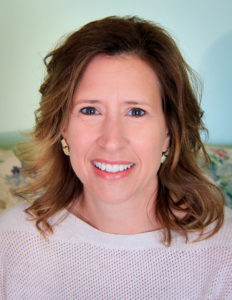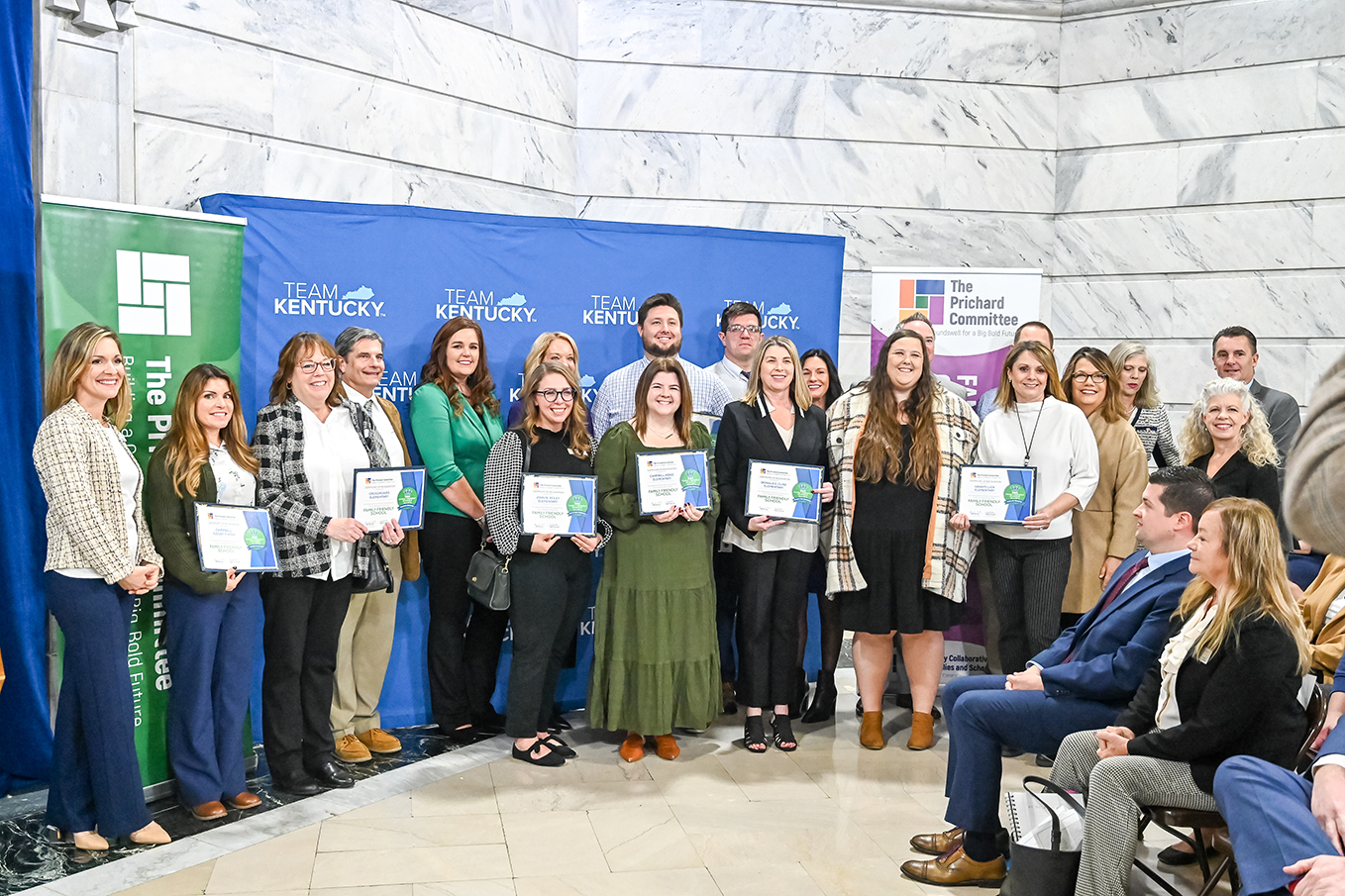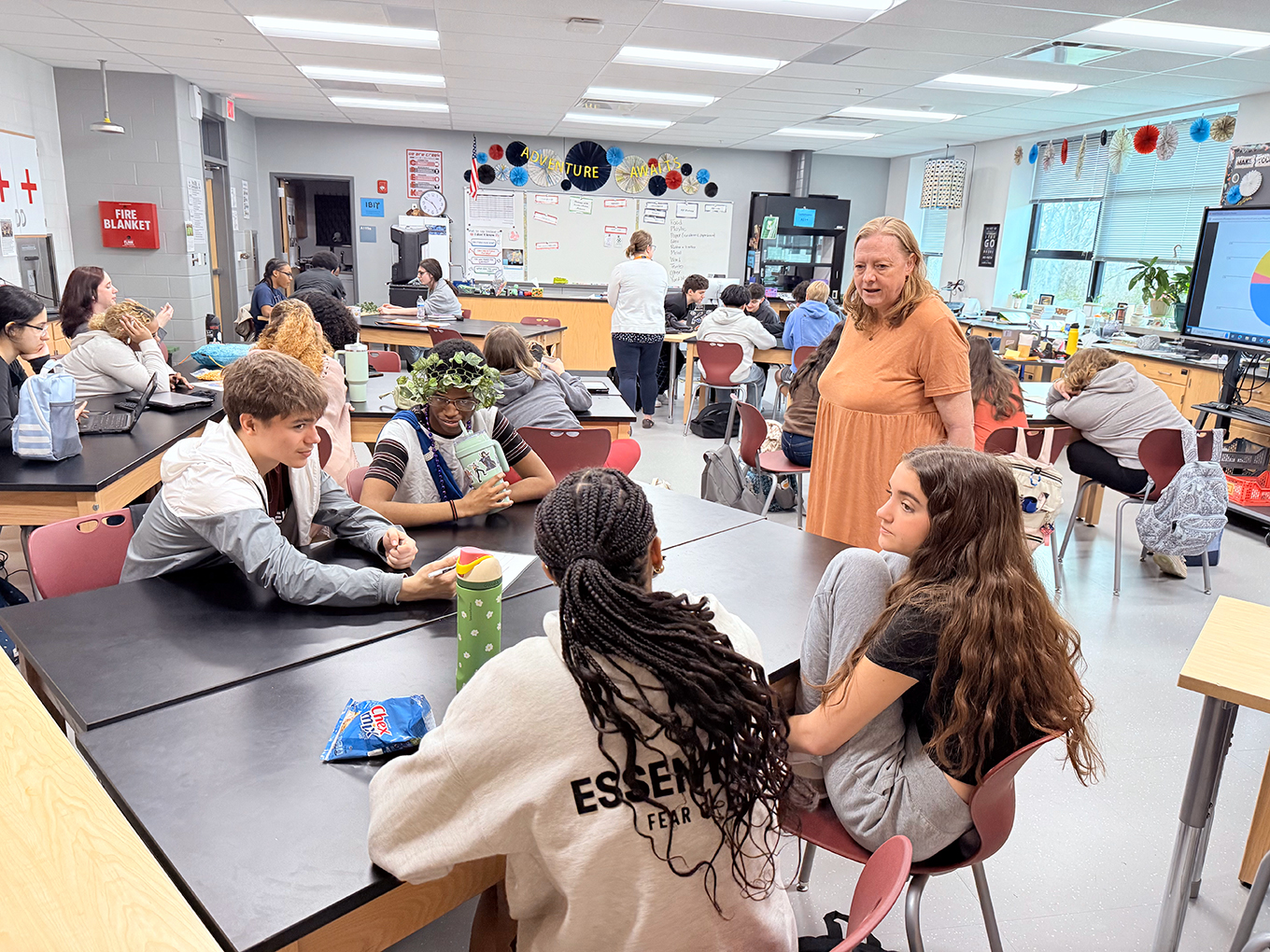
Danielle Burke
By Danielle Burke
danielle.burke@boyle.kyschools.us
Choices. We are all surrounded by them daily, even when it comes to something as seemingly simple as trip to a local store. When my children are given money from family members to buy themselves a birthday gift, they are overwhelmed by the many options awaiting them in the toy aisle. It is the act of choosing that makes us unique, that allows us to express our individuality.
In my 6th-grade language arts classroom, I got comfortable giving my students a pre-assigned, tried-and-true writing prompt, along with appropriate articles I had chosen that allowed me to guide them toward the use of strong evidence to support a claim. Most students consistently created a competent piece of structurally sound writing. No one wasted time frantically trying to find a topic to write about or an article to support their ideas. In fact, I had taken choice out of the hands of the students completely.
I first began to feel uncomfortable with my approach to writing when I attended a KEA-sponsored National Board Jump Start, a session intended to introduce teachers to the certification process. As I was reading through a section on teaching inquiry, I began to consider one of my writing prompts where I asked students to suggest ways to deal with a bully. I asked myself if there needed to be a more open-ended question about bullying and I quickly jotted down some ideas.
I knew my original prompt led students to produce cookie-cutter pieces. Going back to the drawing board seemed like more than I had time for in the middle of a unit. Students were producing decent pieces, right? I let the matter rest.
Sometime later, however, I had the opportunity to join a passionate group of educators working as part of the CTEPS program – Classroom Teachers Enacting Positive Solutions. I had the chance to listen to other teachers describe the challenges they saw in their schools. These were not challenges that could be easily overcome, but they were challenges that pulled at educators’ hearts and minds. I knew this was my time to delve into the writing issue that existed in my classroom. I began to develop a challenge based on student choice in writing in conjunction with developing critical thinking and enhancing student engagement.
I knew simply generating topics would not work, as I had tried this angle early on in my teaching career and from my current research, I knew effective inquiry-based learning begins with a question. Perhaps more importantly, I wanted to know what students were inquisitive about. So I gave students three question stems: I wonder what, I wonder how and I wonder why?
The questions students generated blew me away. They wondered how to solve world hunger, why schools have mascots, what technology will be like in the future, how to choose a college degree, why people are terrorizing our country and why some people want to stop others from having freedom of speech. The list went on. My “aha” moment came when I realized I had been withholding opportunities for students to write about what intrigued them for so long, I had forgotten the awesome initiative students will take when encouraged to think for themselves.
I felt reinvigorated in the classroom simply by seeing what students were wondering. Many of them were also excited. Here’s what they said:
“I really like the ‘I Wonder’ assignment. I think it gives me a good challenge. It gives me a challenge because my ‘I Wonder’ is a topic that I have never written about before. I have been told to write about bullying before and my three supporting details never change.”
“I think we should do ‘I Wonder’ questions because everyone will have a unique piece and it is what interests the author.”
“I love the ’I Wonder’ assignment! I think it is a brilliant way to really bring out creativity and imagination in everyone’s writing. Being able to express myself and take my brain somewhere I have never been before are the main reasons that I love writing. As much as I understand and encourage structure in most situations, I have enjoyed doing the ‘I Wonder’ assignment so much because it lets my mind wander.”
It is important to mention there were students who were concerned that the project was too challenging and would have preferred to do the standard bullying writing assignment. These students required extra guidance and support along the way.
I have made it a priority in the classroom to routinely ask students how they feel about their writing progress and what questions they have as they are outlining and drafting. This gives me the opportunity to gauge student thinking and to address their concerns in class. Some students were concerned others would not be interested in their chosen question, which presented the perfect moment to discuss introductions and the importance of making what we feel is important relevant to others as well.
In moving through this process, I consistently identified areas where students need more scaffolding and accountability. Although students spent time researching, when they began outlining, it was evident some of them still did not have the necessary base knowledge in order to fully explain their thinking. My teaching partner was finding the same to be true in her classroom. This realization led me to talk with students about actually reading sources to understand them, as much as possible, in their entirety.
Encountering this issue has caused us to rethink future writing assignments in regard to incorporating sources. How can we help students help each other? How can we structure future writing assignments so that students can share sources and also be required to demonstrate understanding of the source?
Some students also were baffled by the requirement of answering a question that does not have a right answer or that has answers that are difficult to find. I had one student who wanted to change her question from wondering why people become terrorists to why vegetables are so good for us. While both questions are valid, I knew her desire to change came from a fear that she wasn’t finding answers easily enough to her first question.
In a conversation with our district writing specialist, we came to the conclusion that we must find ways to show students it is okay to simply explore and investigate and not find a right answer, but a number of possible answers that reflect what we know so far. Based on this discussion, I plan to generate a different kind of rubric, one that will show students that perseverance in working through the writing process is highly valued and that drawing a single conclusion is not necessarily the only way to respond to a question.
Finally, I have come to the realization that guiding students through this process is not something I can do alone. This is a team effort. In what I think of as the “idea refinement” stage, I need guidance from those around me – my teaching partner, our writing specialist, our learning specialist, technology gurus and most importantly, my students. I need support from the community – those experts who will answer questions, engage in meaningful dialogue and promote critical thinking in my students. I need to enhance communication with parents, key stakeholders in this venture and links to the larger community, to provide encouragement to their students as we work through this challenging process. I also need support from administration to provide time to develop materials and to reflect on each stage of the process.
But in the end, I sincerely believe incorporating student choice is worth it. Just in the short term, the decision to give students a chance to explore, to momentarily cease the quest for an exact right answer, to return to that very basic act of simply wondering has instilled a new passion in me for teaching writing. This idea of providing student choice is bigger than simply improving an assignment in a 6th-grade classroom; instead, I am equipping my students to be successful “wonderers.”
As human beings, our wonderings do not always have simple answers, but we can’t give up when so much is at stake, when a little deeper research is needed in order to enhance our understanding. Embracing uncertainty, digging deep for answers, combing through information with a critical eye and synthesizing findings cannot be taught with a “cookie cutter” writing prompt. While the process is not perfect, student choice can move us all closer to helping our students become the engaged learners we know they can be.
Danielle Burke taught high school English for several years before beginning her work as a 6th-grade language arts teacher in 2012 at Boyle County Middle School. She holds a bachelor’s in English from Centre College and a master’s in English from the University of Kentucky. She is currently a candidate for National Board certification and is a member of the 2016-17 CTEPS team.




This is so inspiring & insightful. Thank you for sharing! I’m in my last year of undergrad at UK and I recently finished making my first “unit.” It was much harder than I thought it would be, and putting it together hypothetically presented a lot of challenges. But after reading this I feel much better! We don’t have to have everything figured out perfectly at first; it’s a process of trial and error through which we find what’s best for our students. Again, thank you :)